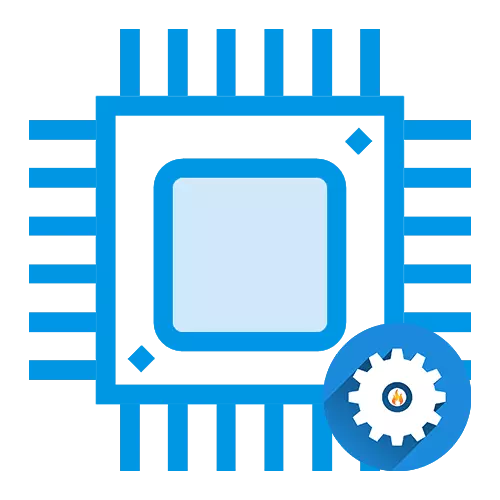
The appearance of the "brakes" and rollers of the Windows system is associated with an excessive load on the hard disk / solid-state drive, the RAM or the computer processor itself. Usually shipping OS processes are visually visible in the task manager and one of these is the "Service Node: Local System", which is capable of downloading and drive and RAM and CPU, while simultaneously. As part of this article, we will consider several methods for overcoming the unreasonable CPU loading.
Causes of troubleshooting "Service Node: Local System"
In the standard conditions, no process, the more systemic, should not overload the OS, processor or any other PC element. There is a whole list of reasons why this could happen:

- Malware infection;
- Violation of the integrity of important OS files;
- System failure;
- Incorrect operation of Windows update service;
- The work of the "heavy" antivirus;
- BIOS settings failure.
The definition of the source of the problem is important for its permission, since measures for one reason may help only for a short time, but then the processor will be loaded again, and again will have to return to the correction of this difficulty.
Method 3: Registry Correction
The problem of loading the local service node occurs due to the accumulated errors and system failure, so it will be useful to diagnose and correct the registry errors. To do this, we propose to use the CCleaner program.
- Click on the "Registry" section on the left side of the program. Make sure all the proposed options are marked with checkmarks, then initialize the "Search for problems".
- Wait until the program finds all damaged areas.
- Put the box opposite the word "problem" to highlight everything that needs a correction, and click "Fix the selected ...".
- Select, create a copy of the registry (you need to save the backup file) or not.
- Click the LKM on the proposed option to "correct marked" to solve all problems.
- When the optimizer marks the status "Fixed" the last failure, you can finish working with the program by clicking the "Close" button.
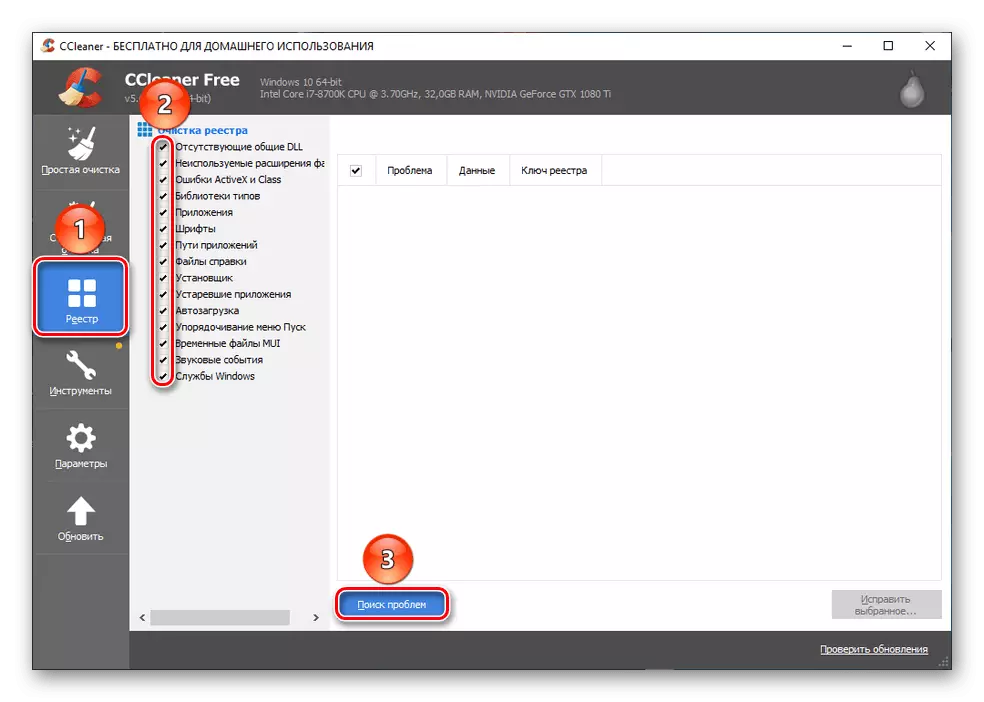
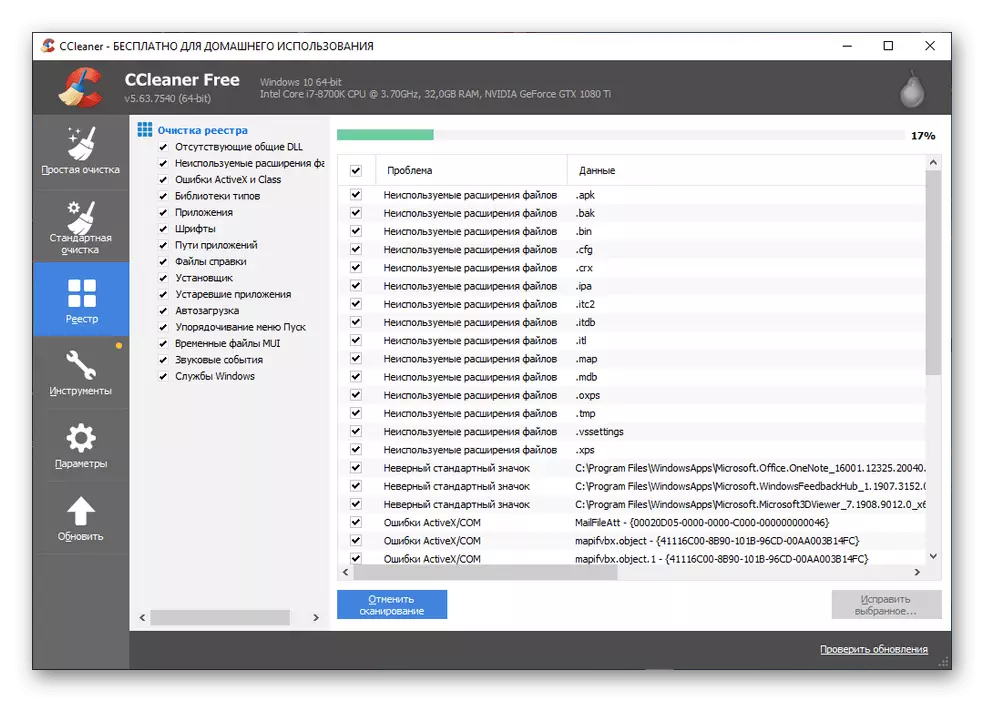
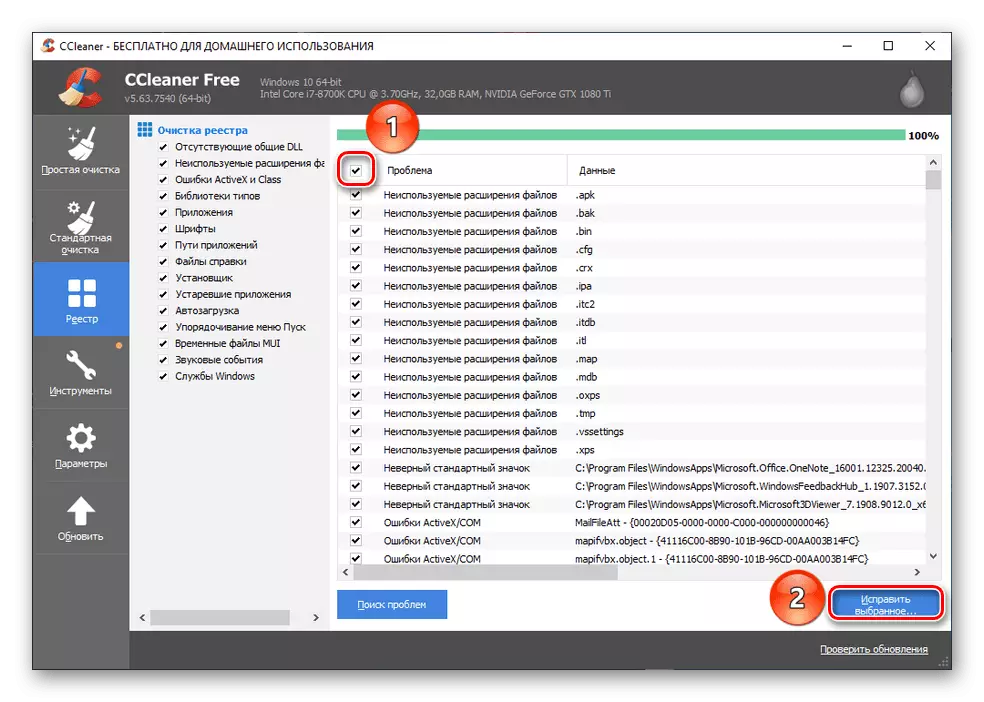
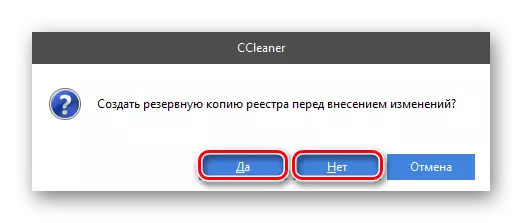
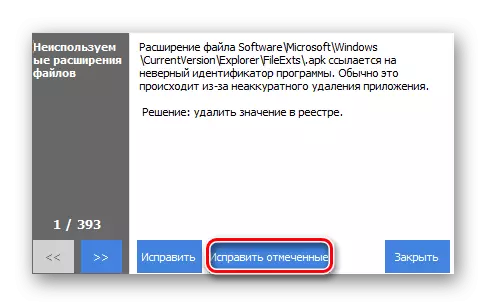
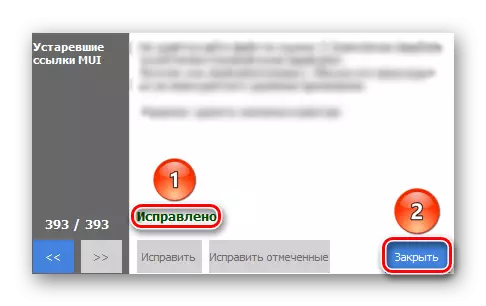
Dr.Web Cureit! And CCleaner works well in a pair, so if it is possible to first clear the system from viruses using the attending utility, and then correct the registry using an optimizer - it will be more efficient than using only one tool.
Method 4: Disable Anti-Virus
Sometimes it happens that it is not the bad work of antivirus software to bring to braking OS, and just the same, on the contrary, the antivirus takes upon itself all the resources of the CPU, without leaving anything else. In this case, it will be useful to turn it off. Consider disabling the antivirus on the example of Avast.In the event of a failure, the next time you turn on the computer, if the stop is selected before rebooting, the antivirus should begin to behave "decently", without having the system resources only on its need. But you can and experiment with the disconnection for an indefinite period, if you wish, find out what kind of component processor is shipping. However, it is not necessary to be too long without an antivirus turned on, because malware does not dorm.
Method 5: Stop Services
Unreasonably load the processor and at the same time 3 services can be masked:
- "Service of the Windows Push-Notifications";
- "SUPERFETCH or" SYSMAIN "service;
- "Windows Update Center".
We turn them off.
These services are not vital, however, sometimes do noticeably load CPUs, so that their disconnection can turn to you not only by solving the problem, but also some productivity growth, even be minimal.
Method 6: Restoration of the system storage
Sometimes the causes of the failure are deeper than I would like, and you have to use tools not so superficial effect on the operating system. The perpetrators of the failure can serve damage or errors that have been accumulated when filling out Windows storage, fortunately, it is not difficult to automatically diagnose and restore.Try not to click on the mouse "Command Line" During diagnostics or recovery, it can lead to rolling and suspension of the executable command. Click "ENTER" To check the status of the process in suspected of hanging.
The storage errors are difficult to recognize without diagnostics, but, since they are detected and restored using two commands, without recessing in programming and manual correction of problems that have arisen.
Method 7: Return to the recovery point
If you approximately remember, from what moment the malfunction node started from a node, and your OS regularly makes the recovery points and other methods did not give effect, you can return to the system status when it did not load anything.
- Locate the "Recovery" application through the Start menu search and open it by clicking on the icon or the Open button.
- Click on "Starting System Recovery".
- Select the option "Recommended Restore", which will roll up to the last system change or "Select another recovery point" if you want to return the system to an earlier condition.
- In the case of another, early point, decide which time recovery is most suitable, putting a tick on the "Show other recovery points" option to display all the states in which it is possible to return. When the choice is made, click on the "Next" button.
- View selected recovery settings and confirm the beginning of the procedure by clicking on "Finish".
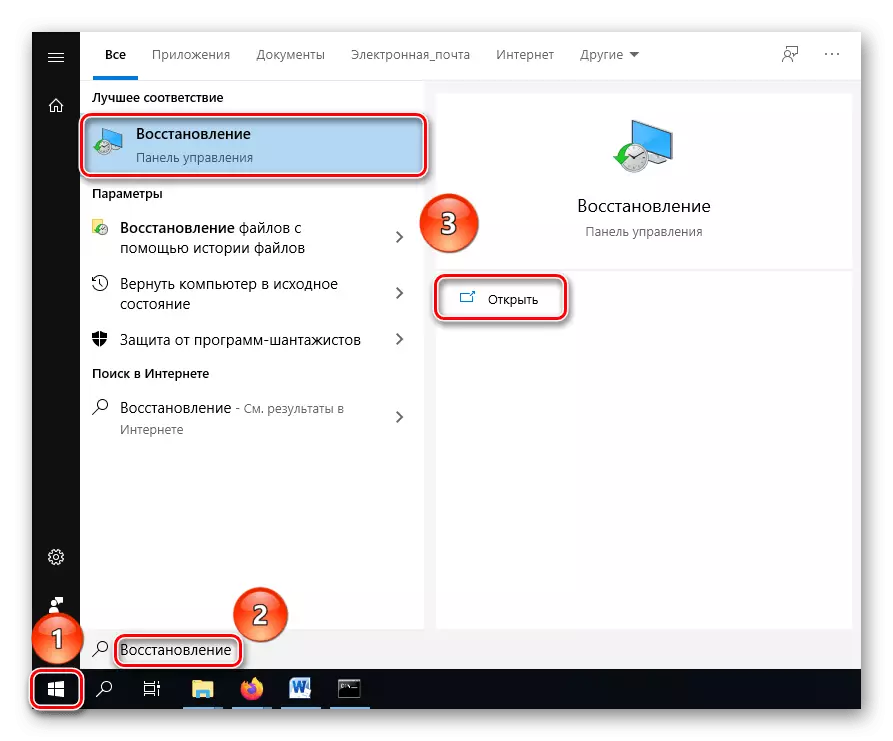
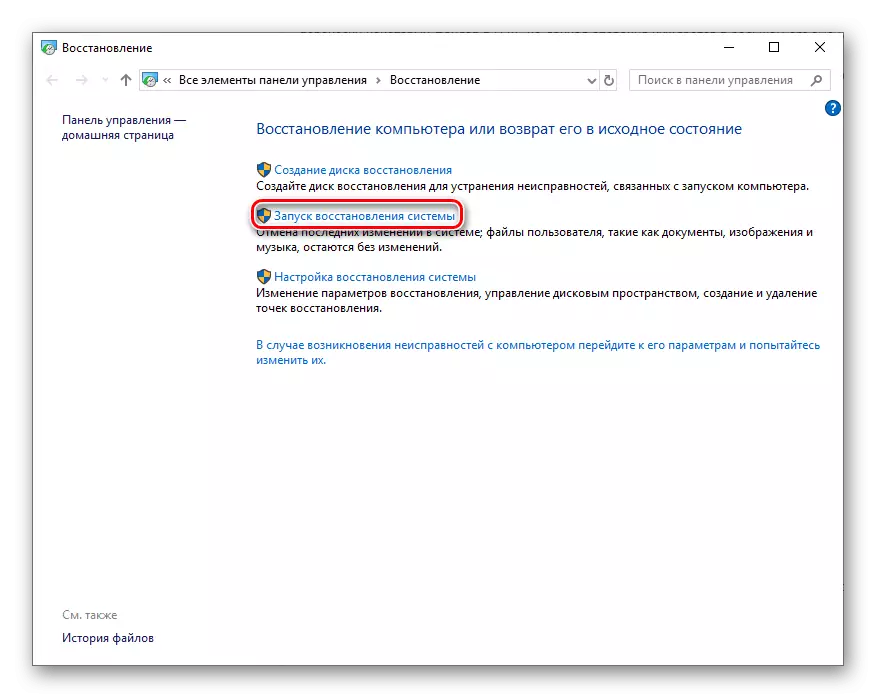
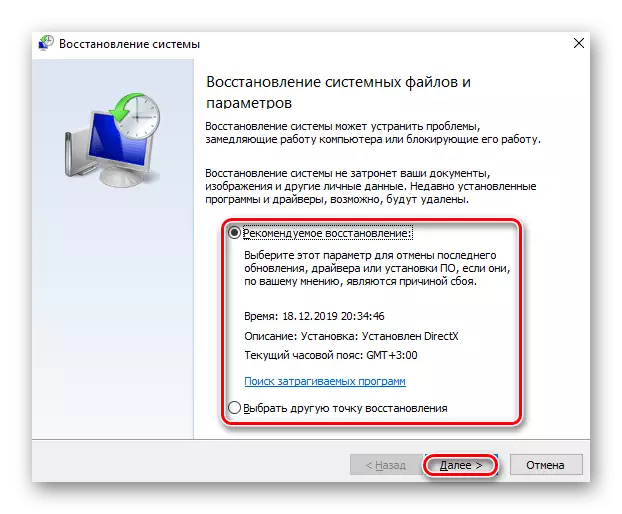
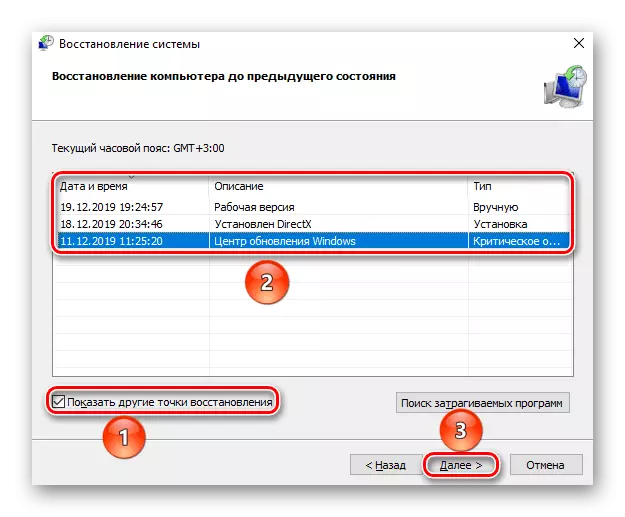
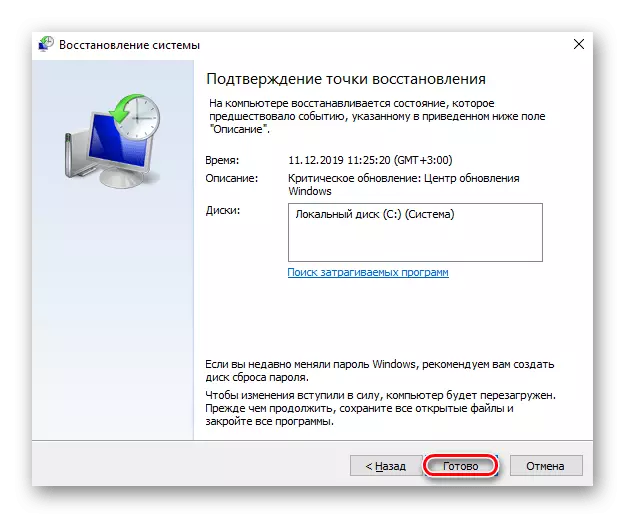
If the rollback to an early state did not help, then the failure occurred at the deep level. This means that in the Windows itself it will not be possible to fix it, although you can try to fully reinstall the OS using the system disk formatting.
READ ALSO: Windows Recovery Programs
Method 8: Change BIOS Settings
It is quite infrequent, but it happens that, it would seem, not particularly important configuration in the BIOS can seriously affect the processor load.
See also:
How to enter the BIOS on the computer
How to configure BIOS on your computer
Configuring UEFI BIOS UTILITY
Enter the UEFI or BIOS of your computer and find one of the proposed setting options in the list:
- ONBOARD LAN BOOT ROM;
- Onboard Lan Option Rom;
- ONBOARD Marvell Lan Boot Rom;
- Onboard NV Lan Boot Rom;
- BOOT ROM FUNCTION;
- BOOT FROM LAN FIRST;
- Boot to network;
- Lan Boot Rom;
- LAN OPTION ROM;
- Mac Lan Boot Rom;
- PXE BOOT TO LAN;
- Intel 82573E Boot Rom;
- Realtek Lan Rom Initial.
Such a specific function provides an additional possibility of starting the OS not only from a flash drive, a hard disk, a solid-state or optical drive, but also over the network, thanks to the connection with the centralized server. The feature is needed for workstations, but for home PC, it does not have practical benefits and in many BIOS is disabled by default, but this setting may well be the cause of failure and excessive CPU load.
Translate it from the "Enabled" position to "disabled".
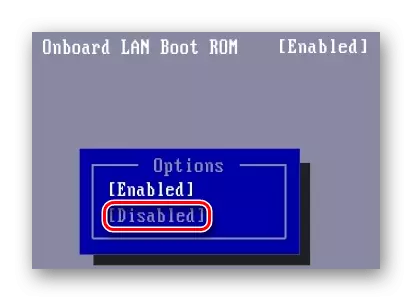
Thus, you turn off the unnecessary function and free your CPU from excessive load.
This article covered the main ways to overcome the situation "Service Node: Local System" Surgical processor. When all the methods described did not help you, it remains only to contact the service for professional assistance.
